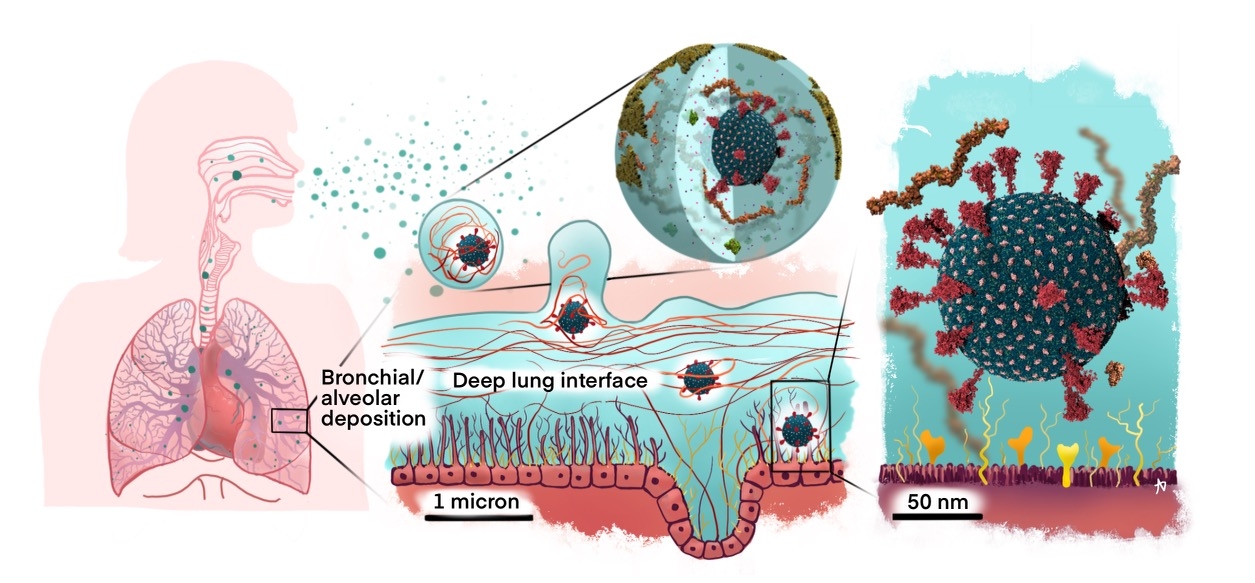Airborne transmission of SARS-CoV-2 modeled with colossal All-atom molecular dynamics simlulations
Date
March 22, 2022
Related Products
Modeling and simulation of respiratory mucins and their interactions with the SARS-CoV-2 spike glycoprotein
AS THE SARS-COV-2 VIRION APPROACHES THE LUNG CELL SURFACE, IT MUST FIRST PASS THROUGH A GEL-LIKE MUCUS LAYER, COMPOSED PRIMARILY OF MUC5AC AND MUC5B MUCIN MACROMOLECULES. HOW THE SARS-COV-2 VIRION MOVES THROUGH AND INTERACTS WITH THESE MUCINS REMAINS UNCLEAR…
COMP Poster Session:
: [COMP] Division of Computers in Chemistry
Molecular Mechanics: Biomolecular Structure, Dynamics and Mechanism
: [COMP] Division of Computers in Chemistry
SARS-CoV-2 Spike Protein and its Interactions within the Glycocalyx | Poster Board #2405
As the SARS-CoV-2 virion approaches its human host-cell target, it must first encounter move through the glycocalyx – a dense surgery matrix expressed above the membrane of epithelial cells – to ultimately find and bind its primary protein receptor angiotensin converting enzyme 2 (hACE2)…



